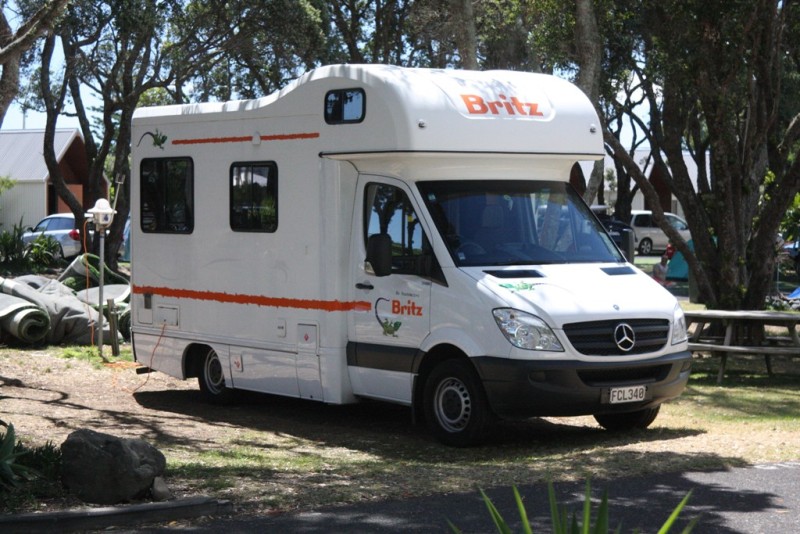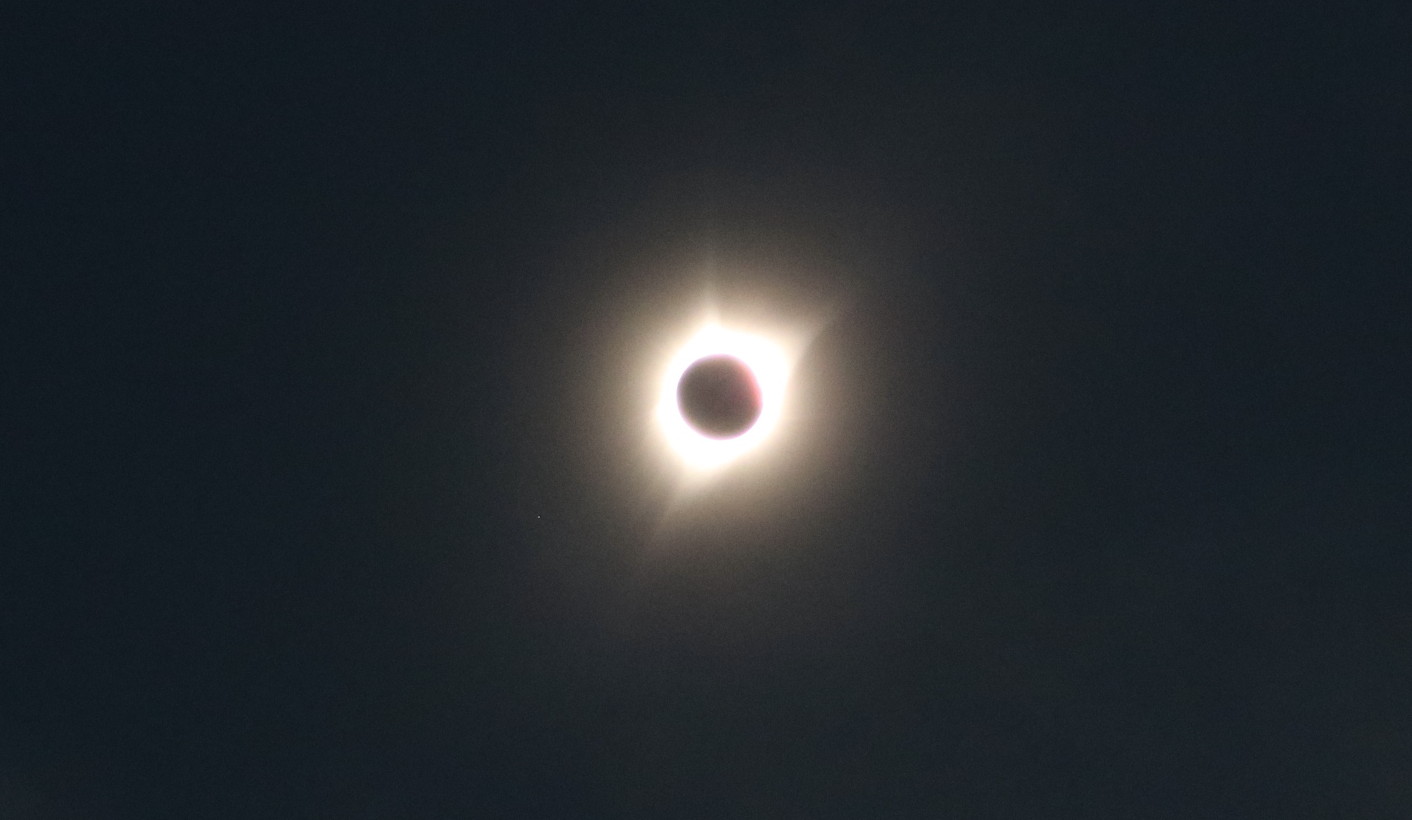Our New Home
 Arriving in Auckland, New Zealand, our first stop is of course to pass through customs. We filled out the arrival card answering questions about the contents of our luggage, etc. Then we face the agents and answer questions about our answers. It is all pretty routine.
Arriving in Auckland, New Zealand, our first stop is of course to pass through customs. We filled out the arrival card answering questions about the contents of our luggage, etc. Then we face the agents and answer questions about our answers. It is all pretty routine.
Next, we need to find a way to get to the rental agency to pick up our campervan. We inquire at the airport information desk and are assured that a shuttle will arrive shortly to take us to the rental agency. Within about 15 minutes, the shuttle arrives. It is a small van with a small covered trailer behind. I load our luggage into the trailer and we hop on the van.
We arrive at the rental agency and check in with the receptionist. We are assigned an agent to take care of us. We go through all the paperwork, questions are answered, and we arrive at an agreement on the details, insurance, additional charges, etc. I elect to go with a full insurance package since I’m going to be unlearning driving and learning it all again. There are many exceptions in the insurance language and we discuss all of them.
Next we are taken to our campervan. We would call it a Class C. It is not new, it has 194,000 kilometers on it. For a rental vehicle it really doesn’t look as bad as one would expect with that amount of travel. It has been well maintained.
We are given a 15-minute introduction and then the keys. We have propane for the stove and water heater. There is an extension cord that plugs into the 220V connection, which is standard in all campgrounds. Standard current in both New Zealand and Australia is 220V alternating current at 50 cycles per second. This requires an adapter for some electrical equipment we bring with us.
Interestingly, most things that have a charger, such as computers, cell phone chargers and many others, will operate on 220V current and on the U.S. standard 110 V current. All that is needed for these devices is an adapter that links our standard plug configuration with the slanted blades that the outlets here have.
I have a razor and we brought a small portable radio that only operates on batteries or 110V. For this equipment we need an inverter and I have one that I’ve used in the car for years. It plugs into the 12V outlet in the car and provides 110 V AC for computers, etc.
These vehicles have the same 12V outlet and it works fine for providing 110 V electric when we need it. With the inverter, we can have electric even when not plugged into the campground electric. The only thing that operates off the house batteries when we aren’t plugged in is the refrigerator, which is a small (think dorm room) regular refrigerator that keeps everything quite cold and freezes things that need to be frozen.
The fresh water tank is gravity fill only. The water pump provides all water -- there is no city water connection in lieu of using the water pump. You fill the fresh water tank and then use the water pump. We find the fresh water supply lasts about two days just doing dishes. Gray water is stored in a gray water waste tank and is emptied with a small 1-inch hose. Toilet wastes go directly into a small storage tank, treated with chemicals. It operates much like the outhouse toilets at some parks, just a holding tank for wastes only.
The entire tank assembly comes out of the campervan and then is emptied and flushed in specific disposal drains for black wastes. It holds about 3 gallons when full and, since little water is added, will fill much slower than the black water tanks we have at home.
The hot water heater is the same thing we use in the U.S. Ours wasn’t working. We found that out when we got to our first campground, turned on the gas and turned on the water heater. I knew exactly what was wrong. It would light and then shut off. The thermocouple that senses the flame was not working. We boiled water on the stove for washing dishes for almost a week before we could get it fixed. When we returned to the rental agency, they had it fixed in 15 minutes.
Despite our small size, we have a four-burner gas stove top and a microwave. A one-piece, single-basin sink with a drain board made of stainless steel completes the countertop. We have place settings for four people, glasses and coffee cups in one drawer, dishes, bowls and saucers in another drawer and pots and pans in a third drawer.
There is a small built-in trash can on the inside of the door below the kitchen sink. A slide-out pantry with two shelves for cans and boxes of food handles most of our food storage needs. There is a closet that has four hangers, a broom, a hose for filling the fresh water, and a bag with the hose for emptying the gray water. Below the closet is a small built-in electric heater that can be set to maintain temperature in the campervan.
We have seven overhead cabinets for storage of lightweight items. The dry goods -- bread, rice, etc. -- are stored in one. The remaining cabinets hold our clothes and my camera, computer accessories and electrical adapters.
Above the closet and the cab is the bed, along the front of the bed is a label that says in bright red letters, “MIND YOUR HEAD.” I wish I could. I’ll have a permanent dent in my forehead by the time we finish this trip. Actually, by the second day I found that the bed could be lifted into a raised position when we are moving about the campervan. A ladder that stores on the bed is placed in position and hooked over the edge of the bed when it is time to retire. The mattress is thin but most welcome at the end of a day. There is also a cargo net to keep someone from falling out, but I refuse to use it.
We have bag chairs and a folding table for use outside and I store these on the bed during travel. I’ll put the cargo net up to make sure they don’t come sliding off the bed while we drive.
There is a second bed in this vehicle. That is in the rear of the vehicle where the dining table can be removed and the cushions rearranged to make a bed. We are not using that bed because we make use of that area for too much other activity. The table that fits in that space is unusable. It is supported by a single leg which inserts into the floor. The leg is removable and the table top is stored in a special slot behind the driver seat. We tried using it for several days and now have stored it permanently away. It was necessary to twist the table out of the way to get past it and sit on the seats. We’re using the camping table that was for outdoor use as our table in the camper.
We also have a television, which is for use with DVDs only. We have no antenna, so no television for four months! As mentioned above, we have a radio and get a little news, especially local news, from that. Most of our news from home comes from the Internet.
The bathroom is an oversized closet. There is a medicine cabinet above the folding sink. It folds into the wall right above the toilet. The shower is in the same small space and soaks the entire room, including the toilet when used. The bathroom is our least used space. It is nice to have the toilet instead of running to the campground restrooms in the middle of the night.
We may find ourselves freedom camping (boondocking) at some point in the trip and may make more use of the bathroom. Here in New Zealand there are few approved areas for freedom camping, and there are strict regulations (as in a law) regarding this practice.
The vehicle itself has dual rear wheels and a front engine. The engine has pretty good power for the size of the campervan. Handling is as one would expect with a vehicle of this size. Actually, I feel more comfortable with our motorhome than with this vehicle. It bounces and sways quite a bit on uneven roads, which are the rule rather than the exception.
The vehicle is manufactured by Mercedes-Benz and the engine is a diesel. The transmission is automatic PRND and has the shift lever on the left side of the driver. All other steering wheel controls, are similar, with the turn signal/dimmer switch and windshield wipers on the left of the steering wheel. The Headlight switch is on the right side of the dash. There is an interlock that prevents the vehicle from shifting into gear if the electric is plugged in. I’ve tried everything! Hey, I just wanted to move it a few inches ....
Next: We actually drive and go to a holiday park (campground).



0 Comments
Recommended Comments
There are no comments to display.
Please sign in to comment
You will be able to leave a comment after signing in
Sign In Now